Creating a beautiful home doesn’t have to drain your wallet. These days, you’ll find plenty of ways to get high-end looks without paying designer prices.
Remember to repin your favorite images!
If you shop smart and keep an eye out for stylish alternatives, you can pull off designer-quality spaces for way less than you’d expect.
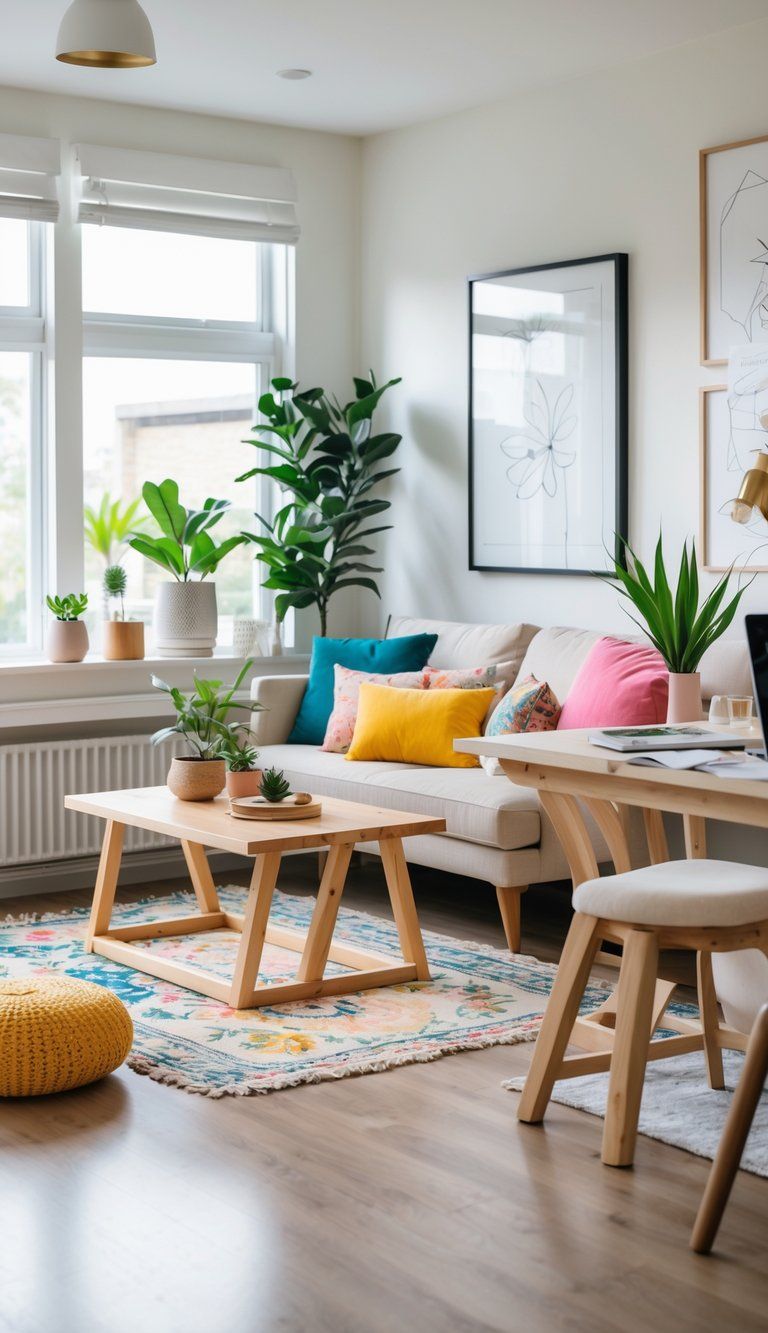
“Designer dupes” are everywhere now, making luxury style feel a lot more attainable. IKEA, for example, offers Scandinavian-inspired pieces that look a lot like pricier designer items, but for a fraction of the cost.
Even swapping out a quality bathroom tap and pairing it with simple tiles can instantly elevate your space.
Open floor plans and clever space-saving ideas turn small homes into something that feels far more luxurious. You don’t need a huge budget or extra square footage to make your place feel high-end.
A lot of people are mixing a couple of quality pieces with affordable finds, and honestly, it works. This approach creates a look that feels personal and, well, pretty upscale.
Understanding High-End Design Trends
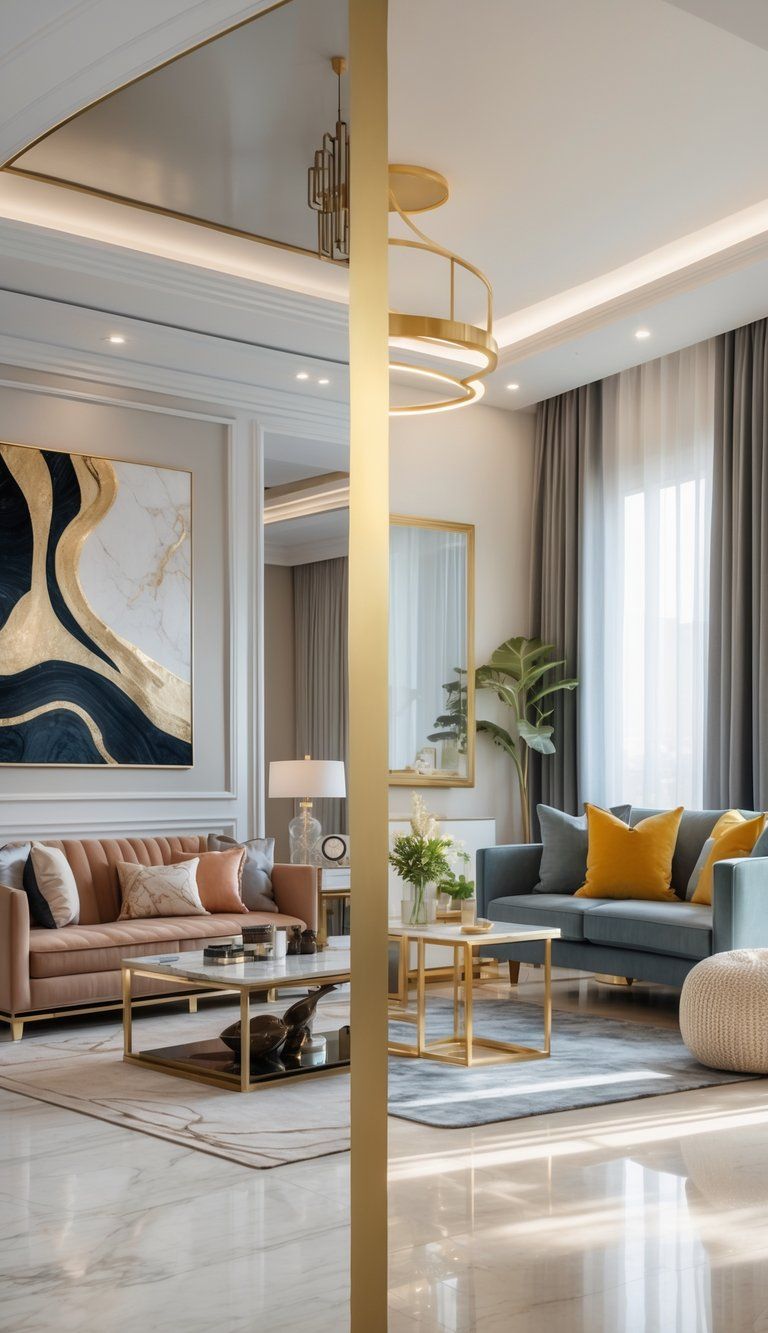
High-end design is all about spaces that feel luxurious and intentional. You’ll notice a focus on quality materials, attention to detail, and a timeless vibe that just makes daily life feel a bit more special.
Current Luxury Aesthetics
Luxury design in 2025 is all about minimalist opulence—think clean lines, but with rich textures like marble, brass, and hand-crafted details.
Biophilic luxury is still huge, bringing in natural elements like living walls, water features, and big windows with amazing views. Premium materials help blur the line between indoors and outdoors.
The new neutrals have moved past basic beige. Now, you’ll see warm taupe, sage green, and muted blues. These shades make a calm backdrop for bold furniture or art.
Curved architecture is replacing sharp lines. Rounded doorways, arched windows, and soft, curved furniture add flow and a bit of drama to modern luxury spaces.
Key Features of Designer Looks
Bespoke furniture stands out in high-end design. Custom-made pieces fit the space perfectly and reflect your personal style.
Layered lighting gives rooms depth and interest. You’ll see a mix of:
- Architectural lighting (like recessed or cove lights)
- Task lighting (think designer reading lamps)
- Accent lighting (art lights, wall sconces)
- Statement fixtures (those wild, sculptural chandeliers)
Mixed materials keep things visually interesting. Designers love combining:
| Material | Common Applications |
|---|---|
| Brushed metals | Hardware, lighting, accent tables |
| Natural stone | Countertops, backsplashes, flooring |
| Exotic woods | Custom cabinetry, statement walls |
| Handcrafted glass | Light fixtures, decorative objects |
Negative space is intentional in luxury design. Instead of filling every corner, designers leave breathing room to let each piece shine.
Popular Influences in Modern Interiors
Global artisanship brings hand-crafted pieces from around the world into designer homes. These authentic finds add cultural depth and stories to a space.
Sustainable luxury is changing what high-end means. People are choosing eco-friendly materials—think reclaimed woods, recycled metals, and low-impact fabrics—for a responsible yet luxurious feel.
Historic references are popping up with modern twists. Details like crown molding and wainscoting get reimagined with fresh proportions or in unexpected places.
Technology integration now feels seamless. Smart home systems, hidden TVs, and automated features blend right in, keeping the aesthetic clean.
Emotional design is getting more attention. Designers ask how you want to feel in your home, not just how you want it to look.
Principles of Achieving a Designer Look for Less
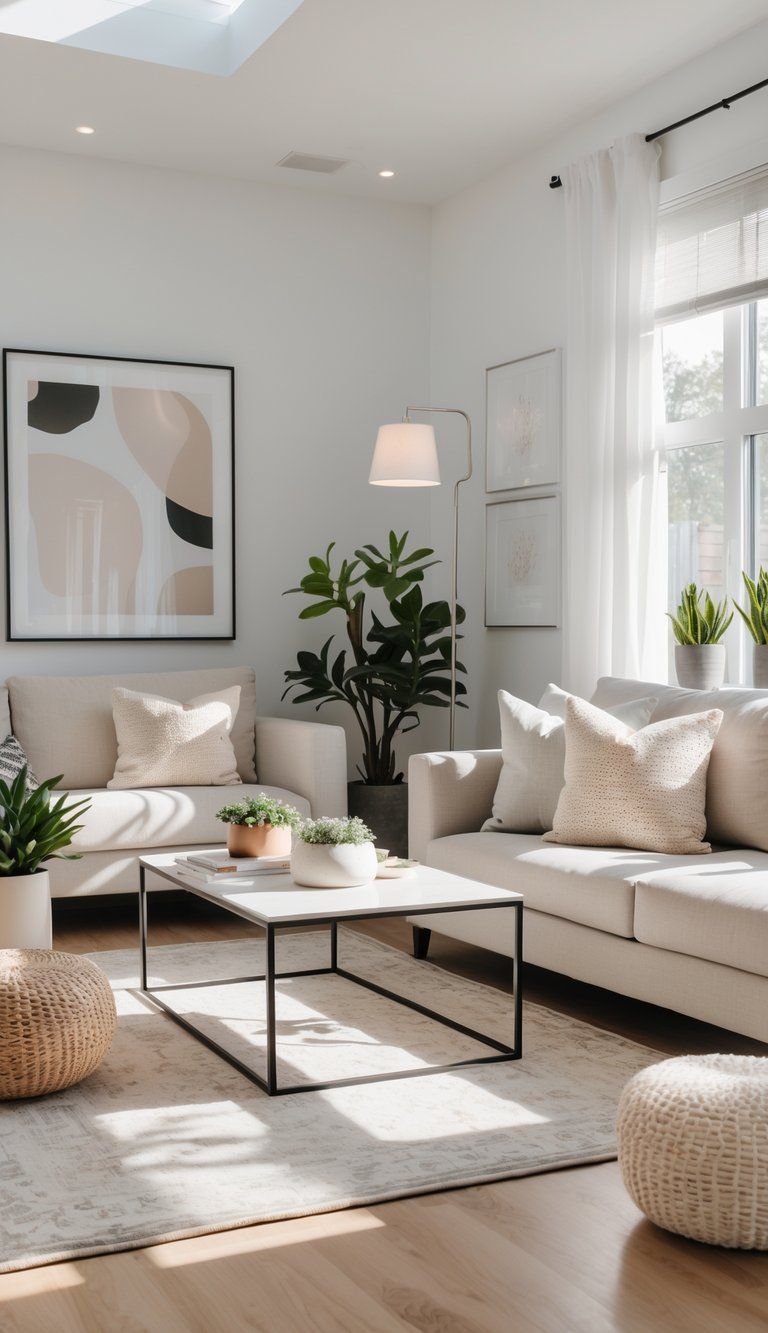
You don’t need to spend big to get a high-end look. With a few smart choices and some creativity, you can pull off designer-worthy spaces on a budget.
Identifying Budget-Friendly Design Opportunities
Focus on “high-impact zones“—places where small changes make a big difference. Swapping out a lighting fixture can totally change a room’s vibe.
Walls are another easy win. A fresh coat of paint in a trendy color can transform your space for not much money.
Try accent walls or DIY wall treatments like board and batten for extra character.
Textiles make a huge impact, too. Quality throw pillows with down-alternative inserts look plush and expensive.
Here are a few quick upgrades:
- Swap out basic curtain panels for floor-length drapes
- Toss a textured throw blanket on your sofa
- Replace cabinet hardware for a fast kitchen refresh
- Add a scent—vanilla or sandalwood always feels luxe
Blending Styles for a High-End Feel
The best designer homes don’t rely on matching sets. Instead, they mix different styles, textures, and eras for a curated look.
Start with timeless basics, then layer in trendier accents so you won’t need to redo everything when tastes change.
Texture matters. Combine smooth with rough, soft with structured. Try things like:
- A modern sofa with a vintage wood coffee table
- Crisp bedding with woven pillows
- Industrial lights with classic furniture
- Mixing matte and glossy finishes in one room
Smart Shopping Strategies
Know where to spend and where to save. Invest in pieces you use daily, like sofas and beds. Save on decorative stuff you might swap out later.
Thrift stores, estate sales, and Facebook Marketplace often have hidden gems for a steal. Designer dupes give you the look without the price.
Shop during big sales:
- January (post-holiday deals)
- Memorial Day
- Labor Day (new fall stuff comes in)
- Black Friday/Cyber Monday
Check out floor models and open-box items for deep discounts. Sign up for store emails to get early sale alerts and discount codes.
Affordable Alternatives to Expensive Materials
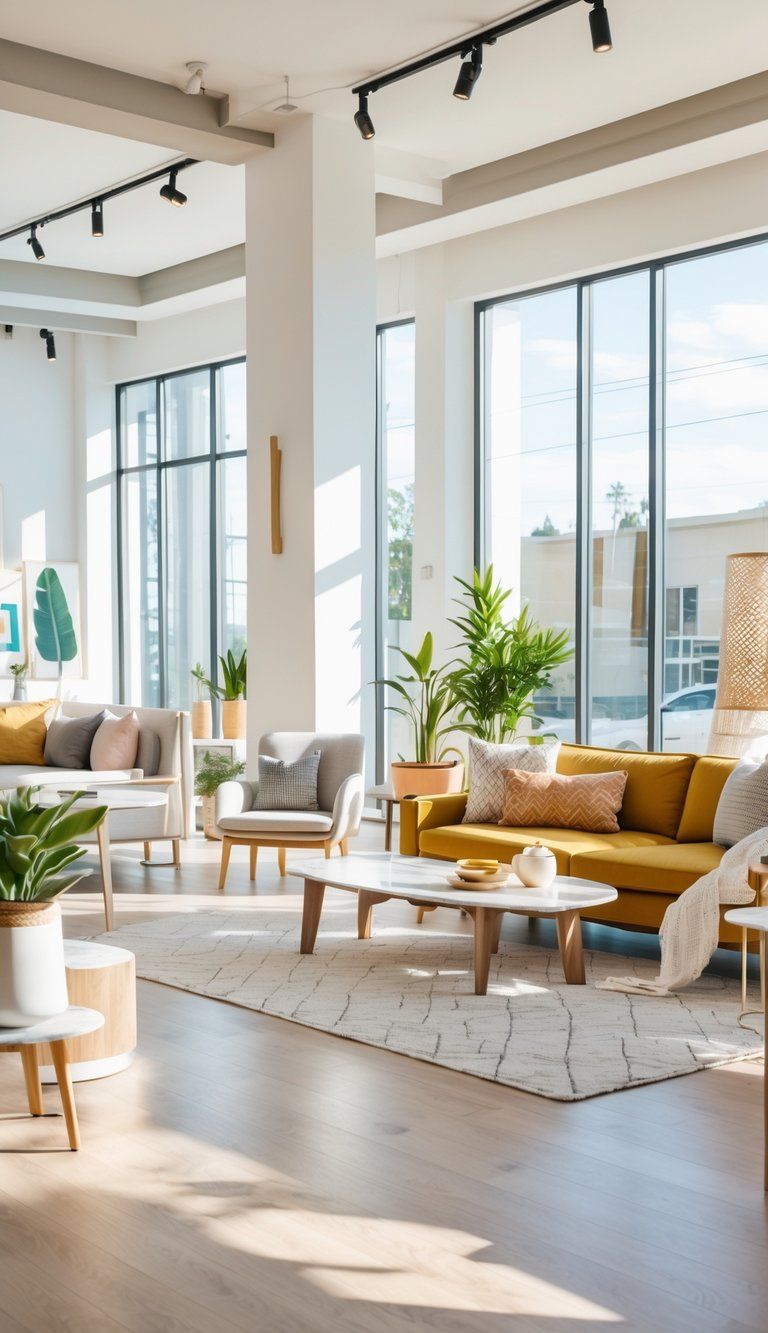
You don’t have to drop a fortune for a high-end look. Plenty of affordable materials can mimic the expensive stuff and save you thousands on renovations.
Faux Leather vs. Genuine Leather
Faux leather gives you durability for way less money than real leather. Modern options look surprisingly close to the real deal, usually costing $15-40 per yard, while genuine leather can hit $50-200.
Go for polyurethane (PU) faux leather instead of PVC for better quality. PU is more breathable, eco-friendlier, and less likely to crack.
Some perks:
- Easy to clean—just wipe with a damp cloth
- Animal-friendly for ethical decorating
- More color choices than real leather
- Resists fading and stains better
To keep it looking real, pick options with subtle texture changes and avoid anything too uniform.
Faux Marble Countertops
Real marble countertops often cost $100-250 per square foot installed. Laminate or quartz can give you the look for $15-75 per square foot.
Budget-friendly marble alternatives:
- Laminate: Cheapest ($15-40/sq ft)
- Solid surface: Mid-range ($35-60/sq ft)
- Quartz: Premium dupe ($55-75/sq ft)
Engineered surfaces resist stains better than real marble and don’t need sealing. Many have super realistic veining now.
For the best look, pick matte or eggshell finishes over glossy ones. Avoid patterns that repeat too much.
Vinyl Flooring for a Luxurious Ambiance
Luxury vinyl flooring (LVF) can look just like hardwood or stone for 30-50% less. Good-quality vinyl planks run $3-7 per square foot, while hardwood can hit $8-25.
Tech has really upped the vinyl game:
- 3D printing mimics real wood grain
- Rigid core makes it tougher
- Click-lock installation is DIY-friendly
Luxury vinyl is totally waterproof, so it’s great for bathrooms and kitchens where wood isn’t practical. Many options now have wide planks and distressed finishes that look just like high-end hardwood.
Go for thicker planks (at least 5mm) and a wear layer of 20 mil or more for busy spaces.
Budget-Friendly Furniture Dupes

Hunting down affordable alternatives to high-end furniture can totally transform your home without breaking the bank. You just need to know where to look and what to focus on.
Finding Stylish Furniture Dupes
Amazon is packed with furniture dupes. Sellers often have pieces inspired by big-name designers for way less.
Wayfair and Overstock regularly stock items that look a lot like Pottery Barn and West Elm, too.
HomeGoods is a great spot for designer-inspired finds, but their selection changes fast, so check in often.
Social media helps, too. Try hashtags like #designerdupes or #furniturefavorites. Lots of interior designers share their favorite budget finds on Instagram and TikTok.
Don’t skip Facebook Marketplace or thrift stores. You might score pre-owned designer pieces for a steal.
Top Sources for Furniture Dupes:
- Amazon
- HomeGoods
- Wayfair
- Target
- IKEA
Evaluating Quality and Value
When you shop for dupes, focus on how it’s built, not just the brand. Look for solid wood frames instead of particleboard.
Check if drawers slide smoothly and doors line up right.
Read reviews and pay attention to what people say about durability and customer service. Real-life photos in reviews show you what the furniture actually looks like.
Think about cost-per-use. Spend more on stuff you’ll use every day, like your sofa or bed. Accent pieces? Save there.
Material quality is more important than an exact style match. A well-made dupe in a slightly different finish will outlast a flimsy perfect match.
Some pieces are worth saving up for—mix high-quality staples with budget-friendly accents for a look that feels balanced and personal.
Customization for a Designer Touch
You can really elevate affordable furniture with just a few tweaks. Swap out the standard hardware for unique knobs and pulls—suddenly, basic dressers and cabinets feel special. Usually, this little upgrade costs under $30 but seriously changes the vibe.
Grab some paint and reinvent your pieces. Try chalk paint for that vintage charm, or go high-gloss if you like a modern edge. Custom colors? Totally doable if you want to match your own palette.
Stick some trim or overlays onto plain furniture and you’ll get those custom details that mimic pricier designs. Etsy has loads of decorative elements that you can just attach yourself, no pro skills required.
Upholstery changes can work magic. Recover a chair seat or toss new cushions on your sofa for a fresh look. Sometimes, just draping a stylish throw over budget furniture does the trick.
Mixing and matching is where the magic happens. Pair your affordable dupes with a couple of authentic pieces and the whole space feels curated—like you meant it, not just because you’re on a budget.
Affordable Décor Pieces and Accessories
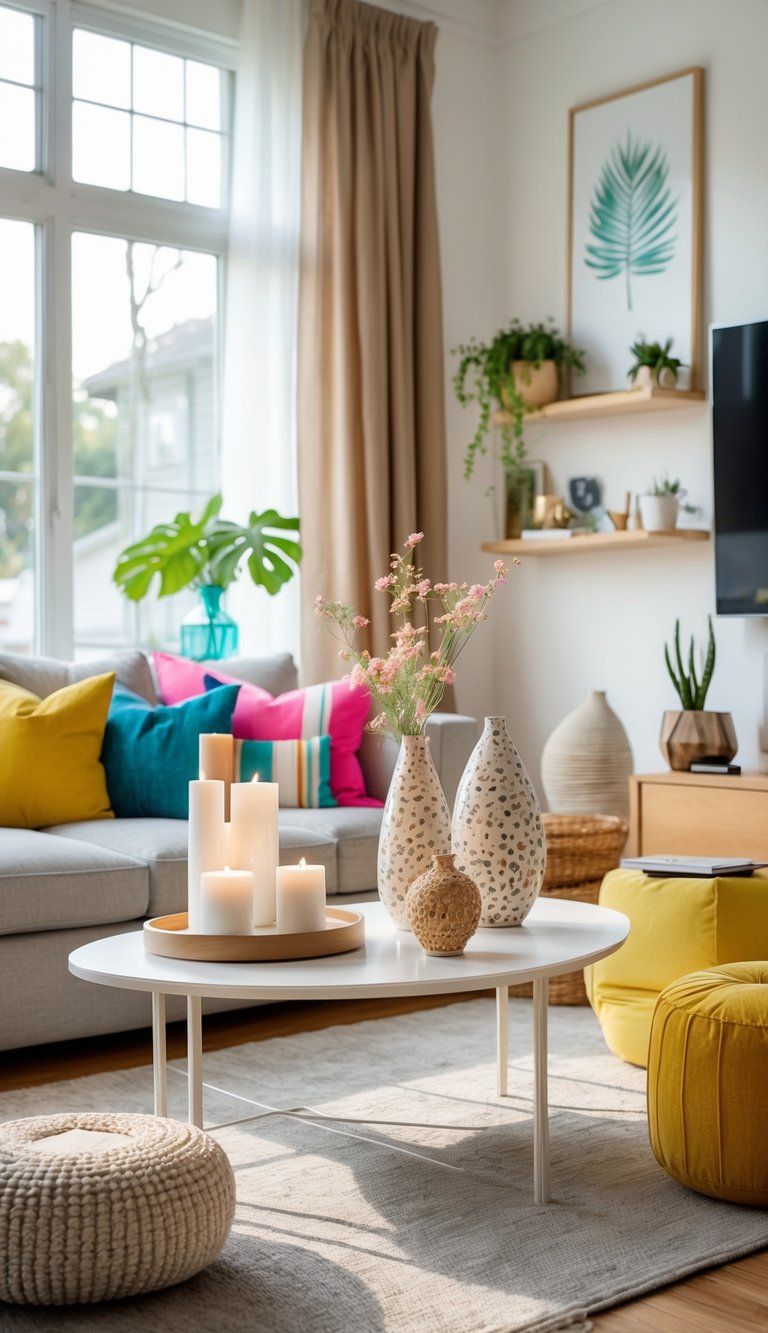
You don’t have to spend a fortune to add style to your space. Tons of budget-friendly accessories can give you the same visual punch as the expensive stuff.
Statement Rugs on a Budget
A good rug can totally change a room. Big stores like Walmart and Target now sell rugs that look just like designer versions but cost way less.
Go for synthetic materials that look like wool or silk—they’re usually cheaper and still look great. You’ll find lots of trendy geometric or vintage-inspired patterns that add character.
Online shops often run big rug sales. If you sign up for alerts, you’ll catch the best deals.
Try indoor/outdoor rugs in busy areas. They’re durable, less expensive, and handle messes better.
Layering a couple of affordable rugs can make it look like you splurged on a custom piece, but you’re still on budget.
Wall Art That Looks Expensive
Wall art can really transform a space, and you don’t need to spend a lot. Digital printables from online shops give you endless options to print and frame yourself.
DIY Options:
- Frame fabric samples or wallpaper scraps
- Create a gallery wall with family photos
- Mount vintage scarves or tapestries
Thrift stores sometimes have original art for cheap. Change the frame and suddenly it feels high-end and intentional.
Try arranging art symmetrically with matching frames for that designer gallery look. Black and white prints in identical frames always look sharp and cohesive.
Oversized engineering prints—like landscapes or architecture—cost very little but make a big statement, especially in simple frames.
Accent Décor and Acrylic Pieces
Acrylic and clear glass accessories give off an expensive vibe without the price tag. They catch light and keep small spaces feeling open, not cluttered.
Stores like Target and Walmart now sell acrylic coffee table books, trays, and boxes that look just like the luxury versions. They bring that same airy, modern feel to your room.
Budget-Friendly Accent Ideas:
- Glass vases with branches or dried flowers
- Metallic photo frames at different heights
- Clear acrylic organizers used as display pieces
Mixing metals—brass, chrome, copper—adds interest. Even cheap metal accents can look luxe if you group them thoughtfully.
Simple candle holders make great, affordable focal points. Unscented pillar candles in neutral tones keep things clean and sophisticated.
Maximizing Visual Impact With Budget Choices

You don’t need a huge budget to create a space that feels expensive. Smart choices and a little creativity go a long way.
Strategic Placement of Decor Elements
Large-scale artwork can instantly upgrade a room. Instead of splurging on pricey art, make your own oversized piece with an affordable canvas or digital print. One bold piece above a sofa grabs more attention than a bunch of small items.
Arrange furniture and decor using the “rule of thirds” to keep things balanced. Put your most impressive pieces at eye level so they really stand out.
Mirrors are a classic trick—they’re budget-friendly elements that make spaces feel bigger. Put them across from windows to bounce light or opposite your favorite features to double the wow factor.
Group similar items together for a curated, intentional feel. A trio of affordable vases can look more expensive than one pricey piece on its own.
Layering Textures and Patterns
Texture adds depth and helps disguise budget materials. Mix rough and smooth—maybe a chunky knit throw with a crisp cotton pillow, or a textured rug under a sleek table.
Budget-Friendly Texture Ideas:
- Woven baskets for a natural touch
- Throw pillows in different fabrics
- Layered window treatments
- Furniture with mixed materials
Mixing patterns can look designer if you do it right. Start big, add a medium geometric, then finish with a small accent pattern. Stick to a tight color palette for harmony.
Lighting matters, too. Instead of one expensive fixture, use a few budget-friendly options at different heights—table lamps, floor lamps, candles—so you get that layered, luxe feel.
Mixing Designer-Inspired Pieces
Pick one or two quality items as your stars, then fill in with budget-friendly finds. A nice sofa with affordable side tables can make the whole room feel upscale.
Look for designer-inspired pieces at budget stores. Lots of places sell items that mimic luxury shapes and proportions for way less.
Upgrade hardware for a big impact. Swapping standard knobs and pulls for more distinctive ones can make basic furniture look designer.
Paint is a game changer. High-end rooms often have bold or unique colors. Try painting a ceiling or a door—unexpected spots like these can give your space a custom vibe without spending much.
Sourcing Designer-Inspired Home Decor
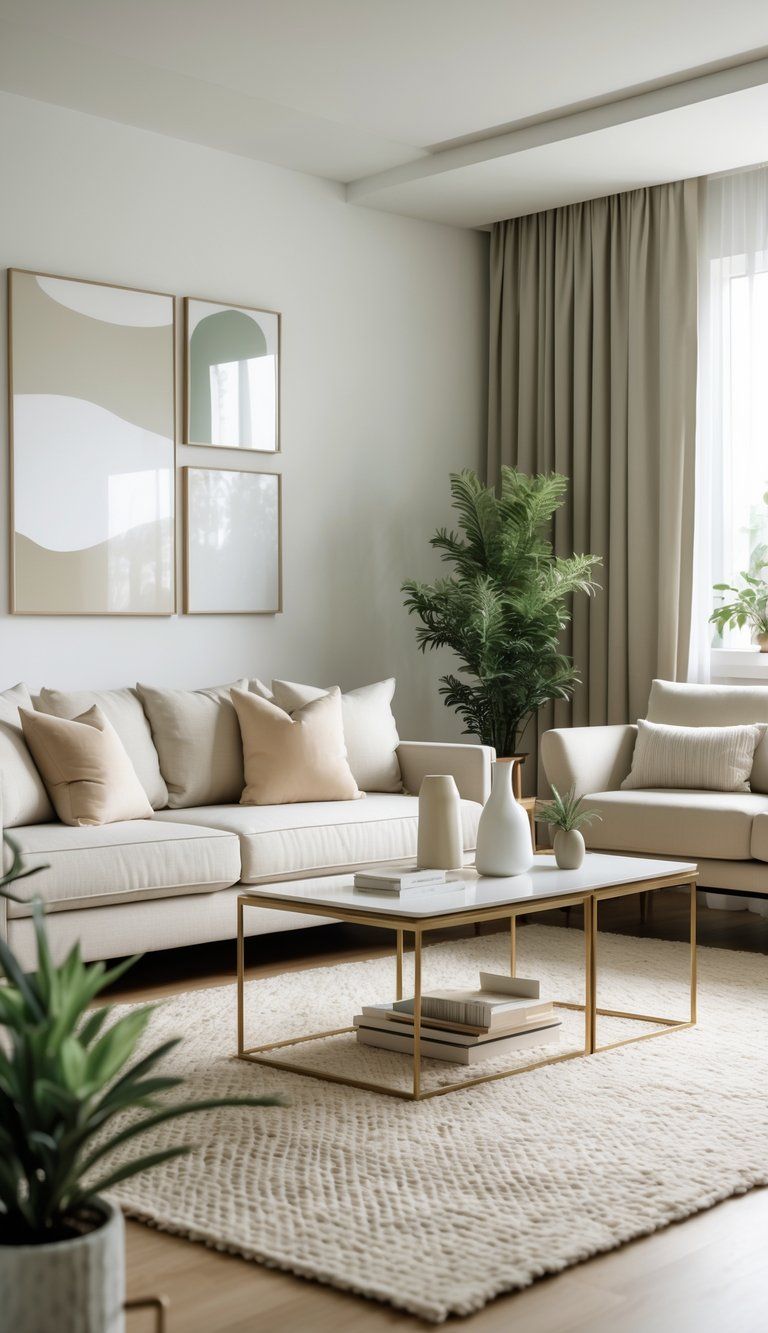
You don’t have to sacrifice style to find affordable alternatives to designer pieces. Knowing where to shop makes a huge difference.
Online Retailers for Affordable Alternatives
Plenty of online stores now sell budget versions of popular designer looks. Wayfair, Overstock, and Amazon all have sections for designer-inspired furniture and decor at a fraction of the price.
Target’s Studio McGee collection looks high-end but stays reasonable. H&M Home and Zara Home have stylish textiles and accessories that won’t empty your wallet.
Price comparison example:
- Designer pendant light: $500-800
- Look-alike version: $100-250
Watch for seasonal sales—they can drop prices even more. Sign up for store newsletters to get early access to promos and discounts.
Secondhand and Vintage Finds
Thrift stores, estate sales, and online marketplaces like Facebook Marketplace or Craigslist can be treasure troves for real designer finds at great prices.
Best places to look:
- Local consignment shops
- Estate sales in upscale neighborhoods
- Online platforms like Chairish and 1stDibs
- Antique and flea markets
You’ll need some patience when thrifting. Visit often or set alerts for the items you want. Vintage pieces often have way better craftsmanship than new mass-market stuff.
If you spot something that needs a little TLC, don’t walk away. A coat of paint or new hardware can totally revive a tired piece and make it look high-end.
DIY and Upcycling Projects
Who doesn’t love the feeling of making something unique for their home? Creating your own designer-inspired decor feels satisfying, plus it’s easy on the wallet.
A lot of luxury items actually use simple designs, so you can often recreate them without much trouble.
Popular DIY projects:
- Painted ceramic vases
- Custom picture frames
- Refinished vintage furniture
- DIY wall art inspired by famous artists
Try searching for tutorials on Pinterest or YouTube. People there walk you through each step to recreate specific designer pieces.
Most hardware stores will cut materials to size for you. That makes things way easier, especially if you’re new to DIY.
You might want to check out workshops at a local craft store. They’ll teach you techniques like upholstery or furniture painting.
Once you pick up these skills, you’ll use them for all sorts of future projects and home updates.

